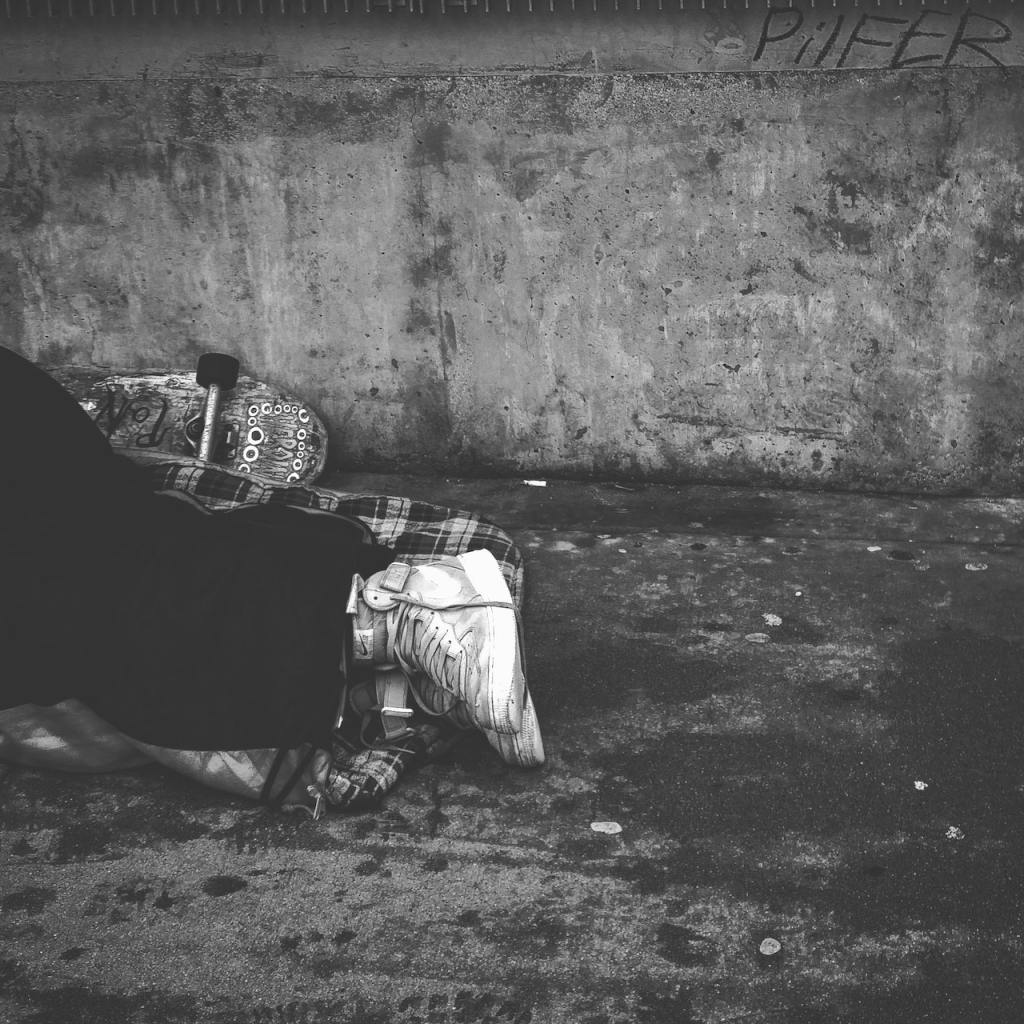
It took me a couple of months, but I finally got through Down and Out, On the Road: The Homeless in American History (first mentioned in this post). Here are the main points I took from the book:
“Down and Out” refers to people who live in impoverished urban areas. More specifically, people who live on “skid row” are “down and out”. (The term “skid row” likely originated in Seattle. As noted in both the Underground Tour and Beneath the Streets Tour in the Pioneer Square neighborhood, tree logs cut from the hills were pushed down Yesler Way towards the waterfront. Logs skidding down Yesler Way led to the name “skid row”.) These days, “skid row” typically refers to centers of poverty in cities where homeless people often reside. This is paired with…
“On the Road” refers to people who were homeless and, in trying to search for work, rode the trains. They often did not ride in the train, but rather on or under the train. These same individuals might reside in “down and out” areas upon arriving in a city. During the 1800s, people who were homeless were often associated with riding the rails than living in skid rows.
The term “the jungle” has been used to describe homeless encampments for nearly 200 years. In recent years here in Seattle, “the jungle” has referred specifically to a large encampment tucked under many trees in an undeveloped area near Interstate 5. This “jungle” was also notorious in the local press for violence (and was subsequently razed, though it seems that there are evergreen efforts to revive it). Over the past 200 years, people who had no place to live set up camp in forested areas (“jungles”) outside of urban centers, which developed into communities.
Cycles of romanticizing and vilifying homeless people are not new. People with no place to live are poor. Because the working class recognized how similar their struggles were with people who were homeless, they were (and continue to be) consistently more sympathetic, empathetic, and generous to them. Other classes, though, have swung between perceptions that people who are homeless are harmless—perhaps even charming (see Norman Rockwell) to lazy, deviant, and dangerous. (Other indicators include The Way It Is and Mr. Wendal, both excellent songs.)
Homelessness is a consequence of poverty. When I first received the book, I confess that I was dismayed to see in the index that “mental illness” is mentioned on only four pages of this ~250 page text. Kusmer, the author, provides a compelling historical account that various systems, including government policy (or lack thereof), economic forces, and cultural values are the chief drivers that lead to people becoming poor. Poverty is a major risk factor for homelessness. (I know this from my own anecdotal experience: Most people who are homeless do not have a severe psychiatric illness like schizophrenia. People often develop psychiatric symptoms because of homelessness. Even if every single psychiatrist in the nation worked with people who are homeless, homelessness would persist: There are plenty of people who are unhoused who do not need psychiatric treatment. They need a place to live and ways to have money to pay for living expenses.)
There was a federal program to address homelessness! Homelessness has been and continues to be a nationwide problem (regardless of the size of the US throughout time) that requires a federal response. The Federal Transient Service (FTS) was the first (and only?) federal agency in US history whose goal was to aid people who were homeless and unemployed. It started in 1933 and only lasted two years, in part because it seemed “successful”: The number of homeless people dropped, so everyone thought the problem of homelessness was solved. FTS funds were swept to support public works and Social Security. (In theory, public works and Social Security seemed like better investments to prevent homelessness.)
The disproportionate number of homeless people who are Black is not new. This is another legacy of slavery. A number of minority populations (e.g., Native Americans, Mexicans, women) suffer from homelessness because of policies and practices related to economic and class exclusion.
Down and Out, On the Road: The Homeless in American History was published in 2002. My sense is that the author, when viewing the current state of homelessness in the US, would continue to argue that the forces that contribute to poverty remain the primary driver of homelessness. I think he would continue to view mental illness and substance use as distractions and not significant causes of homelessness. (To be clear, I don’t think he’s discounting psychiatric conditions as contributors to homelessness for specific individuals, particularly since psychiatric conditions, both directly and indirectly, can pull people into poverty.) I appreciate how he ends the text:
The compulsion to stereotype the homeless as dependent and deviant turns the poorest Americans into an abstract “other,” separate and inferior from everyone else. Although their problems are more severe, however, destitute people living on the streets and in homeless shelters are not so different from the rest of us. They never have been. Any genuine effort to end homelessness must begin with a recognition of that essential truth.